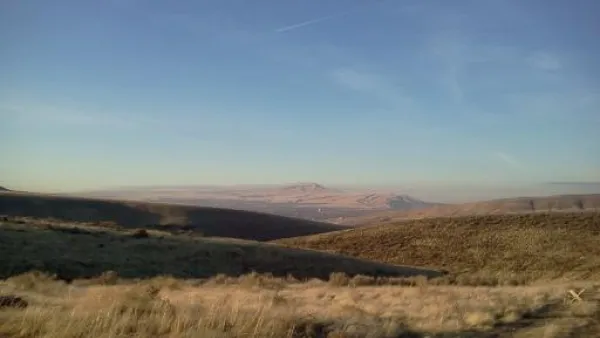While the wind energy credit was extended thanks to the fiscal cliff deal, don't expect to see a flurry of wind projects built and certainly it won't match last year's production. Much uncertainty remains for this renewable power industry.
Ryan Tracy writes about the uncertainty that the wind industry faces despite seeing the wind Production Tax Credit of 2.2 cents per kilowatt hour extended for 2013 due to the fiscal cliff deal (American Taxpayer Relief Act of 2012). "Wind power faces competition from low-priced natural gas and slow growth in U.S. electricity demand," but the biggest uncertainty is whether the credit will be renewed next year for projects unable to break ground in 2013.
"Wind power is still a small part of U.S. electricity capacity: Through October 2012, wind turbines generated about 3.3 % of the country's electricity. But the industry has grown dramatically in recent years and installed some 12 gigawatts of capacity in 2012, according to preliminary industry estimates." In addition, outside of hydropower and biomass and biofuels, it is the largest source of renewable power in the U.S according to the pie chart by the Institute for Energy Research.
There are some bright spots.
- "Some wind-farm developers are drawing up plans. Greg Wolf, president of Duke Energy Corp.'s renewable-energy development arm, said in an interview that the nation's largest utility is looking at "hundreds of megawatts" of wind farms that could start construction this year. Boston-based wind-energy developer First Wind said it expects to have projects totaling at least 500 megawatts qualify for the 2013 tax credit."
- 29 state require that a percentage of electricity generation come from renewable sources. California legislation requires one-third by 2020 in its Renewables Portfolio Standard.
Not all utility companies support the wind tax credit. "The utility Exelon Corp. broke ranks with fellow wind-power producers by opposing the tax credit last year."
Wind energy remains largely subsidy-driven, with $10.8 billion in grants awarded between 2009 and 2012, according to Ryan. "(T)he latest extension of the tax creadit will cost about $12 billion over 10 years according to congressional estimates."
The real test for the industry may be surviving without the tax credit (see Planetizen: Should Wind and Solar Stand on Their Own?). If states increase their renewable power requirements, the industry will profit. And carbon cap and trade programs, like the one enacted in November by California won't hurt. A carbon tax like exists further north wouldn't be so bad either.
Contributor's note: Wall Street Journal subscriber-only content may be available to non-subscribers until Jan. 23.
FULL STORY: Wind Industry's Roar May Diminish in 2013

Analysis: Cybertruck Fatality Rate Far Exceeds That of Ford Pinto
The Tesla Cybertruck was recalled seven times last year.

National Parks Layoffs Will Cause Communities to Lose Billions
Thousands of essential park workers were laid off this week, just before the busy spring break season.

Retro-silient?: America’s First “Eco-burb,” The Woodlands Turns 50
A master-planned community north of Houston offers lessons on green infrastructure and resilient design, but falls short of its founder’s lofty affordability and walkability goals.

Test News Post 1
This is a summary

Analysis: Cybertruck Fatality Rate Far Exceeds That of Ford Pinto
The Tesla Cybertruck was recalled seven times last year.

Test News Headline 46
Test for the image on the front page.
Urban Design for Planners 1: Software Tools
This six-course series explores essential urban design concepts using open source software and equips planners with the tools they need to participate fully in the urban design process.
Planning for Universal Design
Learn the tools for implementing Universal Design in planning regulations.
EMC Planning Group, Inc.
Planetizen
Planetizen
Mpact (formerly Rail~Volution)
Great Falls Development Authority, Inc.
HUDs Office of Policy Development and Research
NYU Wagner Graduate School of Public Service


























